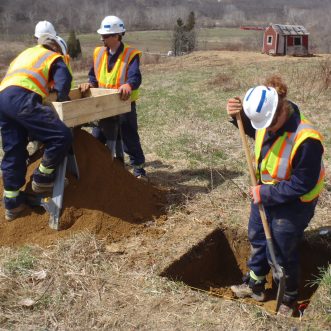
The U.S. Fish and Wildlife Service (USFWS) announced on December 10, 2024, that the monarch butterfly (Danaus plexippus) is proposed for Threatened status listing under section 4(d) of the Endangered Species Act (ESA). The ESA 4(d) rule pertains to Threatened species status, a step below Endangered status, and allows the USFWS flexibility under the ESA to customize the level and means of protection for a species.
The listing proposal is published here in the Federal Register under docket FWS-R3-ES-2024-0137.
Public Comment Period for Listing: Key Dates and Information
A 90-day comment period opens December 12, 2024, and will close March 12, 2025. Virtual public informational meetings will be held at 6 p.m. EST January 14, 2025, and 8 p.m. EST January 15, 2025. The Service will then evaluate the comments and issue a final decision on listing the monarch butterfly, a process that typically takes at least one year. The USFWS decision comes four years after the monarch butterfly was added as a Candidate species for ESA protection in December 2020 because the USFWS deferred the monarch listing evaluation in order to collect additional data and prioritize other higher-priority species.
Declining Monarch Populations and Proposed Habitat Protection Efforts
Migratory populations of monarch butterfly follow routes northward into the U.S. from overwintering sites in south central and northwestern Mexico, southwestern California, and the southeastern U.S., as shown on the Monarch Joint Venture map here. According to the USFWS and Xerces Society’s Western Monarch Count, the eastern migratory population is estimated to have declined since the 1980s by approximately 80% in their eastern population and more than 95% in their western population. The Western Monarch Count recorded 233,394 butterflies at 256 overwintering sites in the 27th annual mid-season count (2023) in California and northwestern Mexico. Eastern monarch butterfly overwintering areas in Mexico’s oyamel fir mountain forests dropped to just 2.2 acres in 2023, down from 5.4 acres in 2022, and as much as 44.9 acres in the late 1990s. The monarch was afforded Endangered status in Canada in December 2023 under the Species at Risk Act, and Mexico established a Monarch Biosphere Reserve for the overwintering sites in south central Mexico in 1986.
The proposed listing identifies seven proposed monarch overwintering critical habitat units in southern coastal California for protection. The proposed listing specifically invites information to evaluate exceptions to include in the 4(d) rule, including how to address routine land management practices, pesticide use, and impacts from transportation and energy infrastructure projects. Among the list of proposed activities ‘excepted’ (exempt) from ESA regulation are monarch habitat management on residential and other developed lands; routine agricultural, silvicultural, and ranching activities; vehicle strikes; and non-lethal scientific and educational activities. Vegetation management such as mowing and ground disturbance are proposed to be excepted if conducted at times of year when monarchs are not likely present (typically winter).
For more information, contact Jonathan Farrell, a Principal in our Ecological Sciences Practice at our Pittsburgh headquarters, at jfarrell@cecinc.com or at 412.977.1456.




Post a Comment